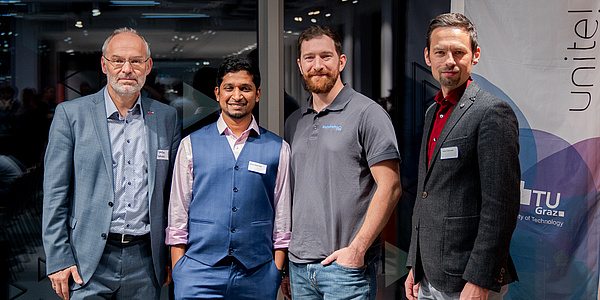Bangs and flashes signal advent at TU Graz
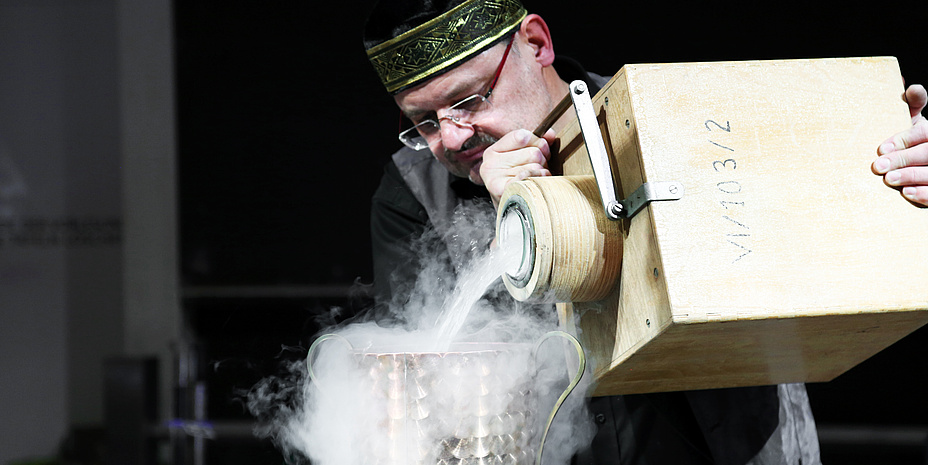
‘Can I just get through here?’ – a question as pointless as ‘Is snow cold?’ Long before the beginning of this year’s Christmas Lecture, Lecture Hall P1 on Campus Neue Technik is packed and even the steps are occuped. Right at the front of the lecture hall, a stately man with a round cap on his head starts to rub a metal rod slowly and with a serious face. A ‘PFIIIIIIIIIIP’ issues from the rod at increasing volume, slowly silencing the loud murmurings in the lecture hall. With a storage capacity of some 800 persons, it is one of the biggest lecture halls at TU Graz. Welcome to Pottlacher’s experimentation lecture!
Don´t try this at home
‘Today we’re going on an experimental journey through the phase diagram,’ explains professor Gernot Pottlacher, deputy head of the Institute of Experimental Physics at TU Graz and the man in the round cap. In the coming two hours, he demonstrates 40 experiments on the fluid, solid, gaseous and plasma aggregate states.
He starts with the ‘popcorn for physicists’ experiment and the absolutely necessary tip ‘Don’t try this at home!’. Without further ado, he sticks five light bulbs in an old microwave oven and switches it on. And what happens? The first sparks fly, the first bang issues forth and the audience dissolves into laughter for the first time.
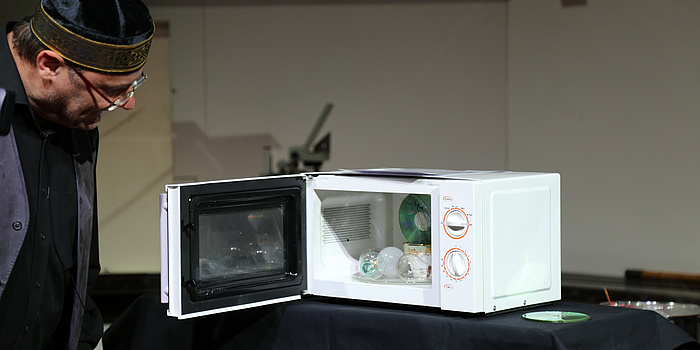
Popcorn for physicists: Don’t try this at home!
Oxygen has to cope with a lot
‘For me entertainment is an important element in the Christmas lecture,’ explains Gernot Pottlacher during rehearsals for the evening of excitement. ‘But above all else, I would like the visitors to be able to learn something in the two hours.’
The experimental physicist achieves this, for example, in experiments dealing with oxygen. First of all he draws it out of the air in the lecture hall and, using liquid nitrogen, cools it down so far until it splashes out of a small metal tube in drops onto the lecture table. The next experiment is even more extreme – and sufficiently complex that the researchers had to carry it out before and transmit it to the lecture hall by video. In this experiment liquid oxygen turns into solid oxygen. This takes place either at incredibly low temperatures – in this case with the help of helium, which is the coldest substance on earth and has a boiling point of minus 269°C, thus freezing oxygen. ‘Have you ever seen anything so extreme before?’ asks Pottlacher. ‘These small, blue blocks are oxygen in solid form.’
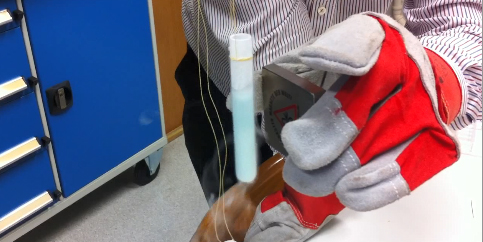
Solid oxygen is blue. And paramagnetic.
If you’ve discovered an interest in experimental physics thanks to these spectacular experiments, you might as well remain in the lecture room. In the physics bachelor’s degree course, TU Graz offers a comprehensive basic study programme. There are also various English and German master’s programmes building on this. If you are specifically interested in Gernot Pottlacher’s courses, you’ll find them in TU Graz’s list of lectures. You could register for the compulsory seminar ‘Demonstration experiments for teaching physics’ and experience the professor in his natural environment.
A lecture with tradition
Gernot Pottlacher and his team are responsible for the experiments being carried out successfully. Senior scientist Roland Lammegger carries out experiments himself and is responsible for the perfectly positioned live camera. University assistants Matthias Leitner, Thomas Leitner, Peter Pichler and Anna Werkovits assist in the experiments. They spend the week before the lecture doing tests and exercises so that everything runs smoothly on the day. At least, nearly everything. As Gernot Pottlacher says with a smile: ‘That’s the beauty of experimental physics – something always goes wrong.’
That’s the beauty of experimental physics – something always goes wrong.
Nobody goes home without a final big bang
It’s almost 6pm and it’s the turn of experiment 40 – the last experiment of this year’s lecture. If you know Gernot Pottlacher and his team, you’ll know they’ll want to finish with an explosion to remember. This time they demonstrate what happens when warm water is jauntily poured into a bucket of liquid nitrogen. Correct: a cloud of water and nitrogen swathes the lecture hall in a white, winter veil. See you next year at Pottlacher’s experimentation lecture!
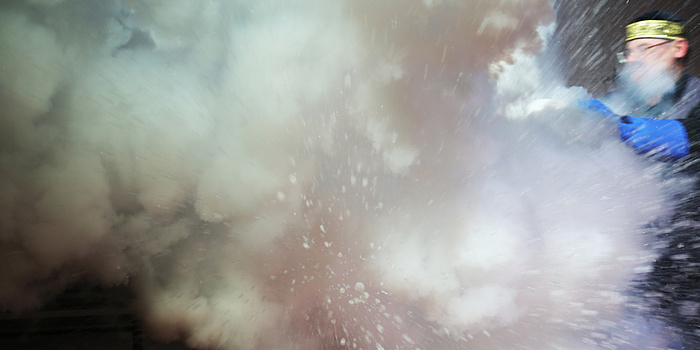
Professor Pottlacher never goes home without a final explosion.
Kontakt
Gernot POTTLACHER
Ao.Univ.-Prof. Dipl.-Ing. Dr.techn.
Institute of Experimental Physics
Petersgasse 16
8010 Graz
Phone: +43 316 873 8149
pottlacher@tugraz.at


